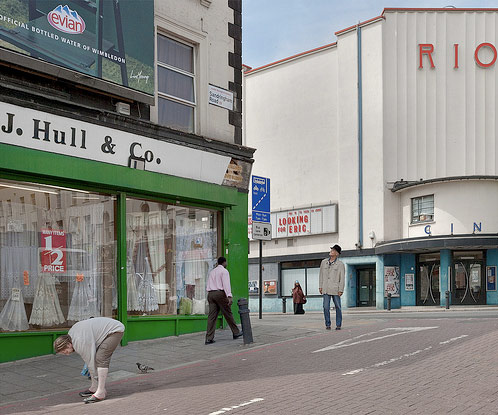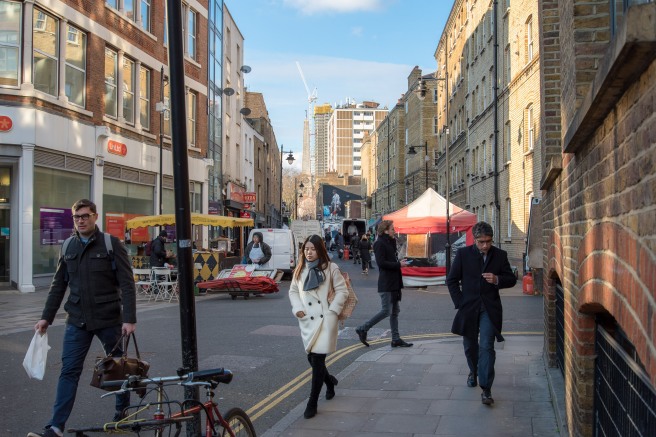I had started developing a tripod-based composite approach to some of my landscape photographs, most notably for Photograph 1 – Assignment 5 – Landscape. I was fascinated by the way it was possible to composite people in different places of a scene while using a tripod to maintain the same framing. By adopting such an approach I was able to alter the meaning of the scene in relation to the people it contained as well as between the people themselves (all of them were holding smartphones).

As I have been going though the documentary course I have come across many artists. A couple of them I have found employ a similar approach although to varying degrees of people being composited into the final photograph. Peter Funch is on the extreme side where he composites very large numbers of people into the final photograph; often who are similar to one another in their attire. They are similar to each other so the viewer can establish a connection based on juxtaposition of all these people in the same frame. Although much of his work lacks believability, because each image is put together into a single frame there is still a moment of your eyes daring you to believe what you are seeing is not real. This I believe is because we have traditionally always seen photographs as evidence of a reality and I would suggest Peter Funch takes advantage of us not wholly being able to prove otherwise.

On the less extreme side being more photo-realistic is the work of Chris Dorley-Brown. Much of his photographs are based in Hackney and I felt there was something to learn from his dedication to one area, presumably his local area. I don’t have evidence to be certain he used a tripod and composites some of his photographs other than by analysing his photographs. Quite a few of them have people in the scene who are juxtaposed with other people in meaningful manners that I could discern couldn’t be possible without the use of composite work on a tripod. The reason this was important to me was it informs my practice. I could begin to understand how Chris Dorley-Brown had achieved these visually appealing and yet meaningful photographs, almost in the style of a tableau.

Using the same techniques I had used in Photograph 1 – Assignment 5 – Landscape but looking at the subtle way Chris Dorley-Brown had used similar techniques in his practice, I tried to capture tableau by juxtaposing people with their surroundings but also with each other. Telling a story like Chris Dorley-Brown had managed I found was a much more difficult task than creating a visually appealing photograph for each scene. However, I tried multiple times anyway with varying degrees of success.

Choosing suitable locations for the framing of the photographs was more challenging too than I had imagined. I found it was desirable to search for intersections of roads or at least a scene which offered some kind of depth to it so the people didn’t appear superimposed and any potential story was more forthcoming.

One photograph in particular I felt was quite convincing in telling a story through a single image as I came across a scene in Green Park, London where couples liked to walk. By patiently waiting I was able to juxtapose various couples holding hands walking in Green Park. This was in the style of Peter Funch in the regard that the people all shared a certain trait (they were all couples) but in my opinion was more photo-realistic like with Chris Dorley-Brown.

Going forwards I could see this approach being a useful technique for capturing tourists using their smartphones for selfies at famous landmarks in London (for Assignment 5 – Documentary). The style of these shots would be less photo-realistic, more like Peter Funch’s because you would be unlikely to get lots of people taking selfies simultaneously. Having said that, there are a lot of tourists taking selfies in London!





I hadn’t heard of these photographers and will have to have a closer look at their work-I find this composite approach/strategy quite compelling. Really enjoyed your images-particularly the first one with everyone on their smartphones!
LikeLiked by 1 person
Thanks Michael! Yes do have a look at their other work, both of them use the approach quite extensively although in different ways!
LikeLike